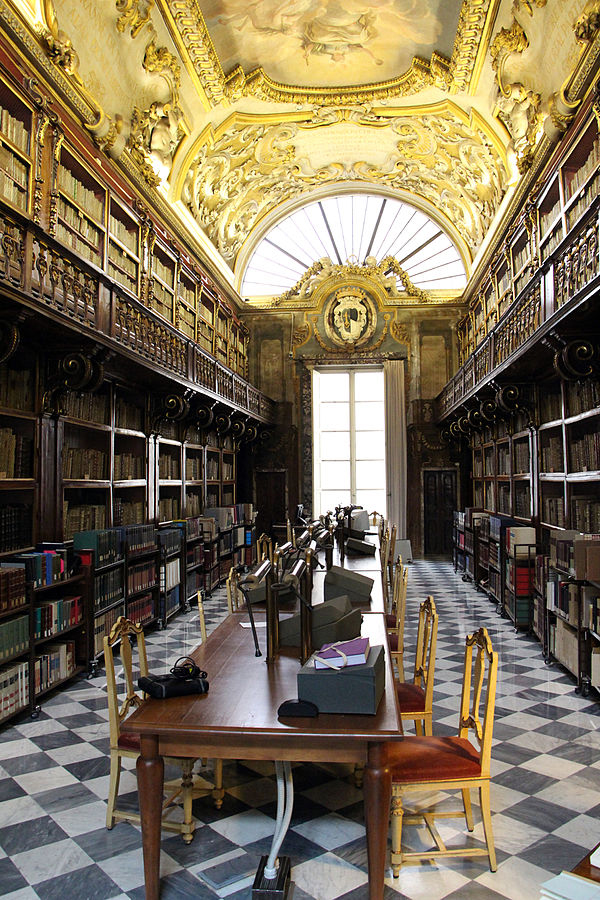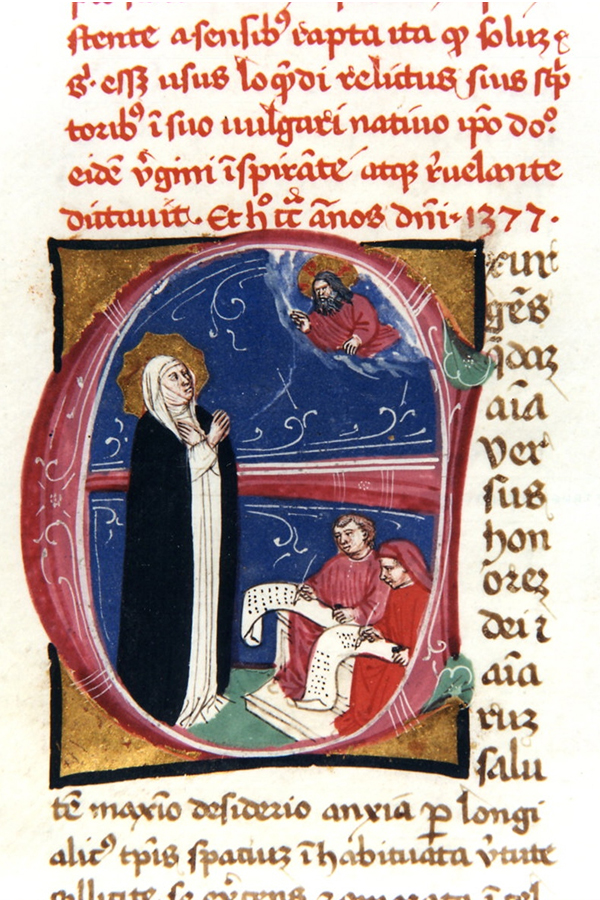
A defining feature of late-medieval Christianity was the influence exercised by female mystics and saints. Women like Catherine of Siena (d. 1380) wielded spiritual authority and were able to speak out on important ecclesiastical and political issues, in spite of religious and social norms that silenced women and denied them institutional power. (Catherine once wrote to the Pope to demand that he reform the church—or resign his office.) The careers and writings of these women raise many interesting questions, for instance regarding the relationship between gender and religious identity. Their writings, in which they sought to do justice in words to the (wordless) reality of what they experienced spiritually, reveal the complexities of medieval thinking about the relationship between the divine and the human, the supernatural and the natural.
My research over the past year focused on the manuscript books of the writings of several important female saints active in late-medieval Italy, in order to understand how the visual design of these manuscripts conveys the complications of what it meant to present these women as both inspired by God (the ultimate source of their words), and as authors of their own texts—in other words, as figures in whom divine inspiration and human imagination united.
Pictured below is a detail from a manuscript of Catherine of Siena’s Libro della divina dottrina (Book of Divine Teachings) from the Biblioteca Comunale in Siena. The decorated or “historiated” initial “E” that marks the beginning of the first chapter shows Catherine deferring to the male authority of God the Father and depending on her male scribes to produce her texts, thus conforming to expectations of female sanctity. At the same time, the book translates Catherine’s vernacular Italian text into Latin, the language of learning, and packages it with a page and book design based on scholarly, Latinate models, in order to present her book as a work of theological import and Catherine herself as an author as well as an inspired saint.
This research has taken me to historic libraries in Rome, Florence, Venice, and elsewhere in Italy and beyond, each with its own idiosyncrasies and delights. At most of these libraries, such as the Vatican Library, scholars are placed in relatively utilitarian rooms while the older and more ornate parts of the libraries are reserved for tourist visits. But sometimes I get to work in the original reading rooms, like the Biblioteca Riccardiana in Florence, in the 15th century Palazzo Medici-Riccardi, which possesses several important manuscripts of Catherine of Siena’s letters and Libro.
My research this year will feed into a book, tentatively titled, “My tongue is as the pen of a scribe who writes swiftly:” Female Saints and Books of Revelations in Late-Medieval Italy, focusing on the careers and writings of Angela da Foligno (d. 1309), Birgitta of Sweden (d. 1373), and Catherine of Siena.

Reading room in the Biblioteca Riccardiana, located in the 15th century Palazzo Medici-Riccardi in Florence, Italy. Photograph by the Biblioteca Riccardiana.

Detail of a manuscript of Catherine of Siena’s Libro della divina dottrina (Book of Divine Teachings). Siena, Biblioteca Comunale, MS T.II.4, 6v. Photograph by the Biblioteca Comunale.

